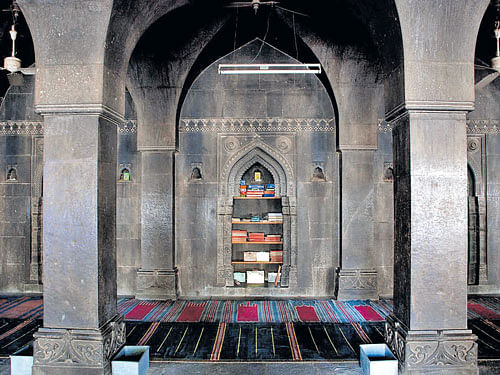
This was news that would have sent the socialites from Aurangabad to Shahjahanabad to Lahore in gleeful rapture. This was news that would have sold thousands of tabloid copies in minutes. But then the news was both incredulous and scandalous.
Of all the people, Aurangzeb, a much-married prince in his 30s and father of 6 children, was smitten by a girl. To make matters more salacious, Hira Bai was a Hindu dancing girl and a concubine of his aunt’s husband.
Aurangzeb spent most of his years in the Deccan both as a prince and the emperor. On his way to Aurangabad to take charge as the governor of Deccan for the second time, Aurangzeb passed through Burhanpur, located in the present-day Madhya Pradesh on the MP-Maharashtra border. It was in Burhanpur that Aurangzeb’s parents Shah Jahan and Mumtaz Mahal spent a number of years. Mumtaz Mahal died here while giving birth to her 14th child and was initially buried in a place called Ahukhana in Zainabad, across River Tapti.
A forgotten chapter
I cross Tapti to make a dash for Ahookhana before exploring the Burhanpur city. While asking for directions, I see the good old MP Tourism stone pillar sign announcing Zainabad Sarai. I have heard about Zainabad but am not aware that it is in Burhanpnur. Ahukhana is a few kilometres ahead of Zainabad.
According to historical data, Aurangzeb was in Ahukhana with his maternal aunt, her husband, and a retinue of girls. Like it happens in Hindi films, Aurangzeb set his eyes upon Hira Bai, who was swiftly inducted into the harem, and named Zainabadi. The next few months were spent in bliss with songs and music filling up the hours. Tragically, Hira Bai died within a year. Just as suddenly the love story started, it ended as abruptly, leaving Aurangzeb inconsolable and distraught. He vowed never to touch wine or listen to music. Aurangzeb rationalised her death by saying god was gracious to him by putting an end to the life of the dancing-girl, because of whom he had committed so many iniquities, and ran the risk of never reining.
Today, Zainabad is like any other medieval town dotting the hinterland. Most inhabitants would not know their connection to Aurangzeb. Forgetting Ahukhana for a little while, I start walking in the direction of tall minarets looming in the distance.
Zainabad was established by Nasiruddin Faruqui or Nasir Khan (1399-1437) in honour of his spiritual guru saint Zainuddin Shiraji. Nasiruddin belonged to the Faruqui dynasty that ruled over Khandesh, an offshoot of Bahamani kingdom.
The village path leads me to a complex with the tall dominating minars in the rear. Conservation work is going on and workers are engaged across the complex.
The sprawling Sarai is square-shaped and enclosed. Inside, a colonnade runs along its four sides. In the centre a huge courtyard stretches in all directions with the usual circular trench dug up for preparing lime plaster. The sign says the Sarai was built by Raja Ali Khan (1576-97) and is primarily constructed of bricks and comprises 69 rooms. The Sarai probably housed the devotees who came to visit the tomb of Sufi Saint Hazrat Peer Shah Chisti Kadri.
Hidden treasures
Burhanpur was a big manufacturing and trading post famous for its brocades, muslins and silks, which were exported to Russia, Poland, Persia and Turkey. It is possible that along with devotees, traders — both Indian and foreigners — used to stay in the Sarai.
Cutting across the Sarai, I emerge in the north through a gateway. Up ahead are the 60-feet-tall minarets of the Zainabad Mosque. With an open hall and no domes, the towering minarets are the distinguishing feature of the mosque. The Qibla wall has ornamented mihrab and minbar. The niches on the walls look delightful with curvy arches. The setting under glorious white fluffy clouds and blue skies is magnificent.
Nasiruddin would be proud of himself. A girl from his town managed to snare Prince Aurangzeb by whispering sweet nothings. He must be ruing and wishing Akbar too could have visited Burhanpur and found his own Hira Bai. Maybe Akbar then would not have annexed Burhanpur and the Faruqui Dynasty could have lasted a few more years.
For now, it is time to say goodbye to Aurangzeb’s young consort Zainabadi’s hometown. There is unfinished business to take care of — to see where Aurangzeb’s mother was buried, beyond in the fields.